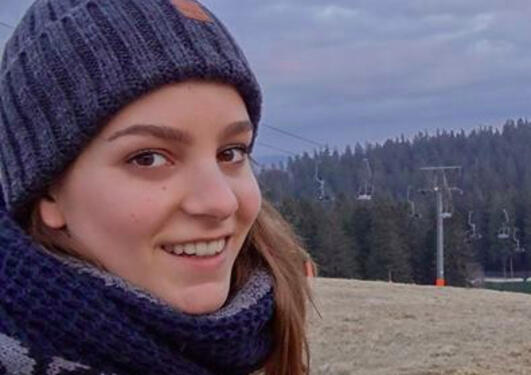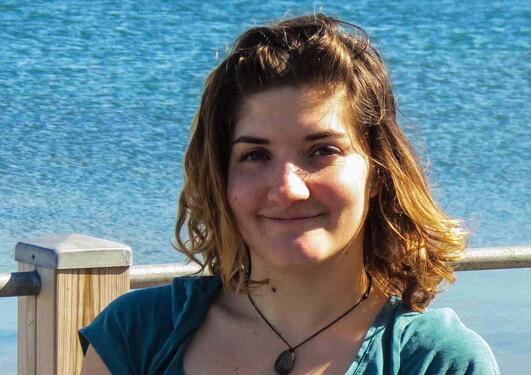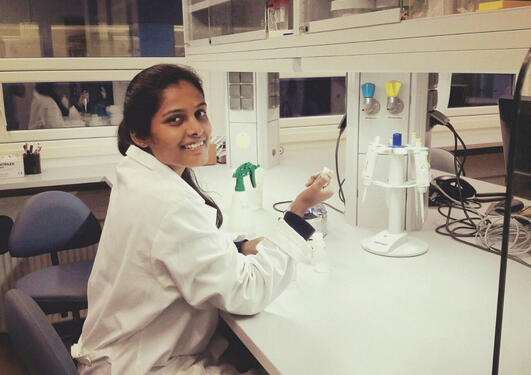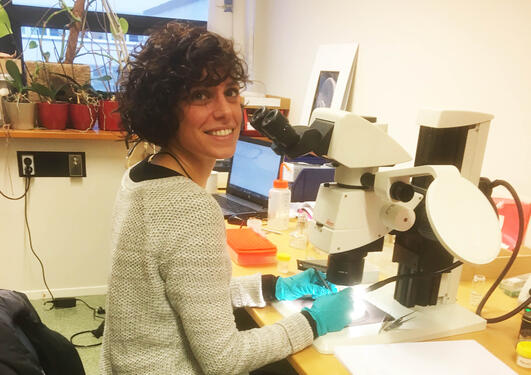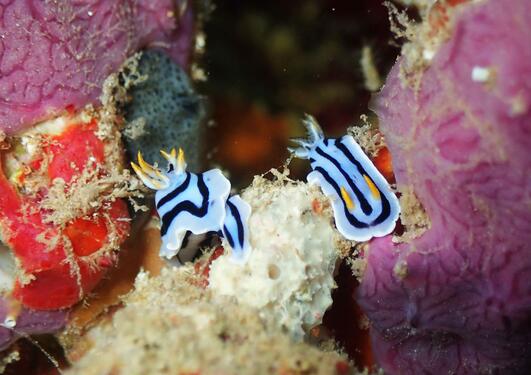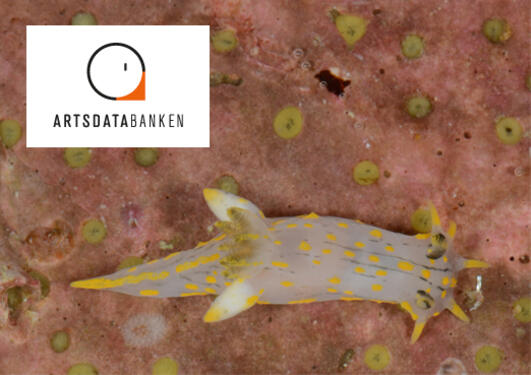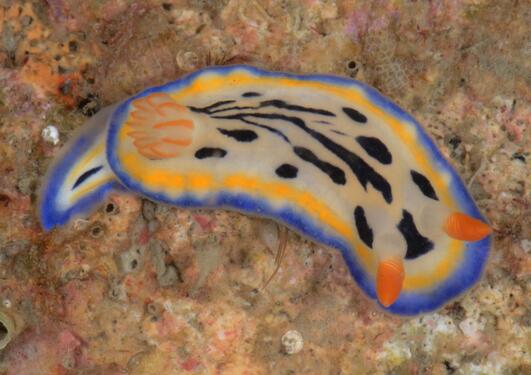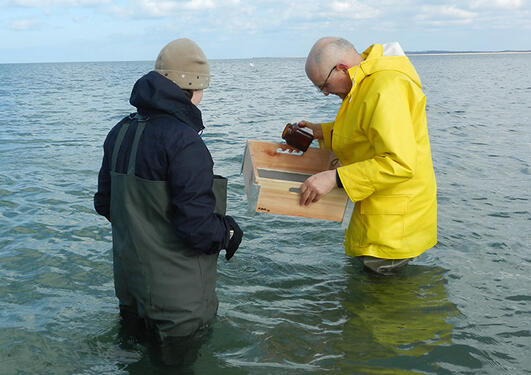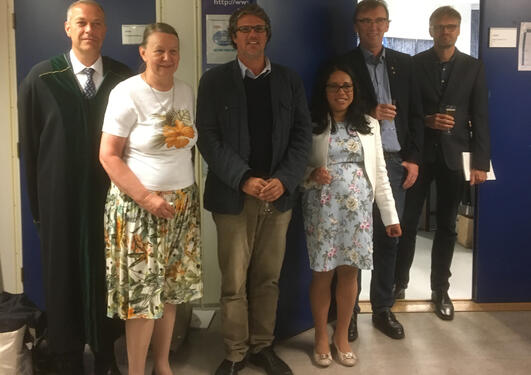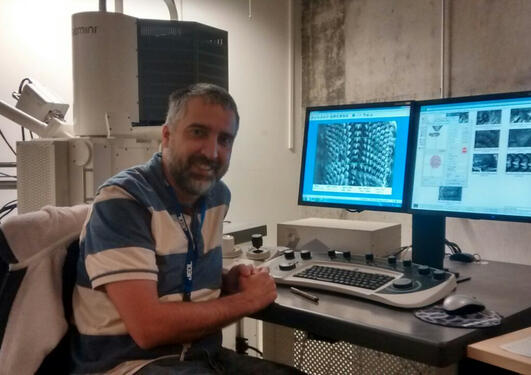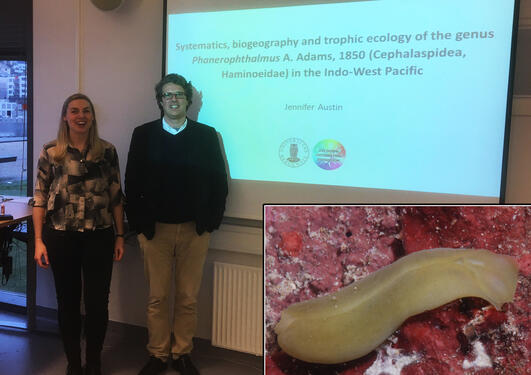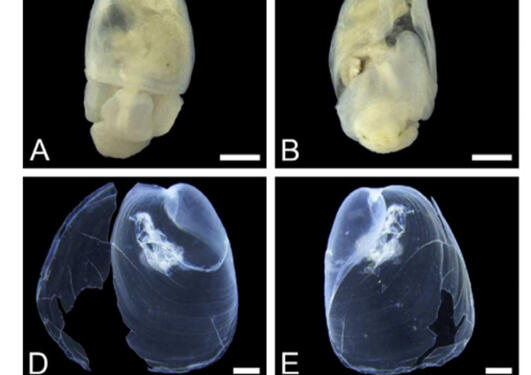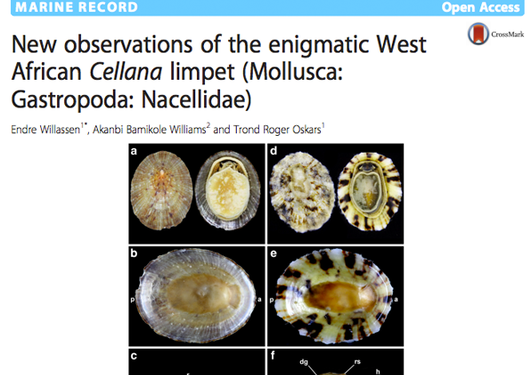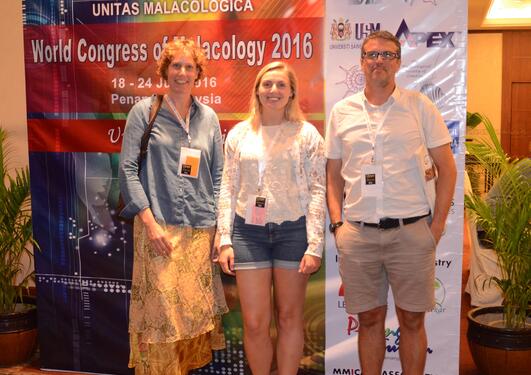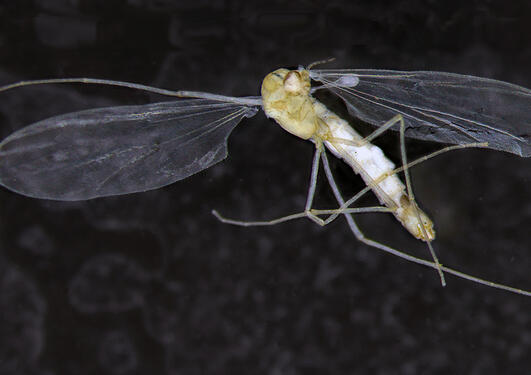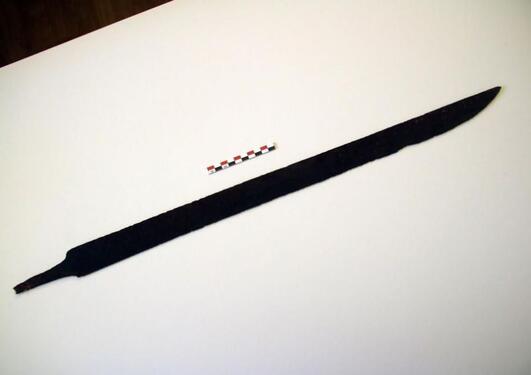News archive for University Museum of Bergen
Cessa Rauch concluded her PhD on sea slugs kleptoplasty in April 2018 at the University of Dusseldorf and has now joined the research team of our Norwegian sea slug project
Justine Siegwald will study deep sea diversity and speciation at the University Museum during the next 4-years
PhD student Monisha Bharate receives scientific training in Bergen
Dr Sara Castillo from the University of Vigo, Spain visits the Museum
Fieldtrip to Mozambique (Nuarro, October 2017)
New project on the sea slugs from southern Norway receives funding from Artsdatabanken
Collaborative work between the University of Rostock and the Natural History Museum of Bergen
Andrea successfully defended her PhD on the taxonomy and phylogeny of the headshield slugs
Dr Carlo Cunha from Brazil visits the Natural History Museum to study the Anaspidea collection
A sick goose-beaked whale was found on the west coast of Norway. Its stomach was filled eith 30 plastic bags, and many smaller pieces of plastic. The whale was emaciated, and scientists believe that the plastic had gathered in such an amount in its stomach that it had created a plug, stopping the digestive process.
Dr Moles visits the Natural History Museum of Bergen
A systematic review of the tropical Indo-West Pacific genus Phanerophthalmus unravels 10 new species to Science
Samples of gastropods collected along West Africa during the Nansen Project between 2005–2012 turn out to be new species to Science
Recently published article by Museum staff in collaboration with Dr Akanbi Williams from the Nigerian Institute for Oceanography and Marine Research sheds light on the taxonomy of Cellana limpets from West Africa
The Natural History Museum of Bergen delegates to the World Congress of Malacology last July 2016 that took place at the UNESCO World Heritage City of Penang, Malaysia.
From left to right: Christiane Todt, Jennifer Austin, Manuel Malaquias
Deep below in a cave in the Velebit mountains of Southern Croatia researchers from the University Museum of Bergen have together with colleagues from Croatia and Germany found the world's only blind flying cave insect.
During a fishing trip in 2012, Gøran Olsen discovered something between stones at Haukeli. The find is now at the University Museum, and appeared to be a single-edged Viking sword with an estimated date in the first half of the Viking Age (c.800-950). Watch the video story of the remarkable find.
Pages
- December 2025 (2)
- October 2025 (1)
- May 2025 (1)
- April 2025 (1)
- March 2025 (1)
- January 2025 (1)
- October 2024 (4)
- September 2024 (1)
- August 2024 (1)
- July 2024 (3)
- June 2024 (1)
- April 2024 (2)
- March 2024 (1)
- December 2023 (2)
- November 2023 (2)
- October 2023 (2)
- September 2023 (1)
- June 2023 (1)
- May 2023 (1)
- April 2023 (2)
- March 2023 (2)
- January 2023 (2)
- October 2022 (2)
- September 2022 (2)
- August 2022 (1)
- July 2022 (4)
- June 2022 (1)
- May 2022 (3)
- April 2022 (4)
- February 2022 (3)
- January 2022 (1)
- December 2021 (1)
- November 2021 (1)
- October 2021 (5)
- September 2021 (1)
- August 2021 (2)
- July 2021 (1)
- May 2021 (4)
- April 2021 (1)
- March 2021 (1)
- December 2020 (3)
- November 2020 (1)
- October 2020 (4)
- August 2020 (1)
- June 2020 (3)
- May 2020 (2)
- April 2020 (4)
- November 2019 (6)
- October 2019 (1)
- July 2019 (3)
- March 2019 (1)
- January 2019 (5)
- May 2018 (3)
- February 2018 (1)
- November 2017 (2)
- October 2017 (1)
- June 2017 (3)
- February 2017 (4)
- October 2016 (1)
- September 2016 (2)
- May 2016 (1)
- November 2015 (1)
- September 2015 (1)
- June 2015 (1)
- May 2015 (1)
- April 2015 (1)
- March 2015 (1)
- January 2015 (2)
- June 2014 (4)
- January 2014 (2)
- December 2013 (1)
- November 2013 (5)
- October 2013 (1)
- June 2013 (1)
- May 2013 (2)
- April 2013 (4)
- March 2013 (4)
- February 2013 (4)
- January 2013 (1)
- December 2012 (1)
- November 2012 (2)
- October 2012 (2)
- September 2012 (1)
- August 2012 (1)
- July 2012 (2)
- June 2012 (1)
- April 2012 (1)
- March 2012 (2)
- February 2012 (5)
- January 2012 (4)
- December 2011 (7)
- November 2011 (1)
- October 2011 (3)
- September 2011 (5)
- August 2011 (2)
- June 2011 (4)
- May 2011 (3)
- February 2011 (5)
- January 2011 (1)
- December 2010 (1)
- November 2010 (1)
- October 2010 (2)
- September 2010 (1)
- May 2010 (3)
- April 2010 (1)
- March 2010 (2)
- February 2010 (3)
- January 2010 (1)
- November 2009 (1)
- October 2009 (2)
- September 2009 (6)
- June 2009 (2)
- May 2009 (2)
- March 2009 (1)
- February 2009 (2)
- January 2009 (1)
